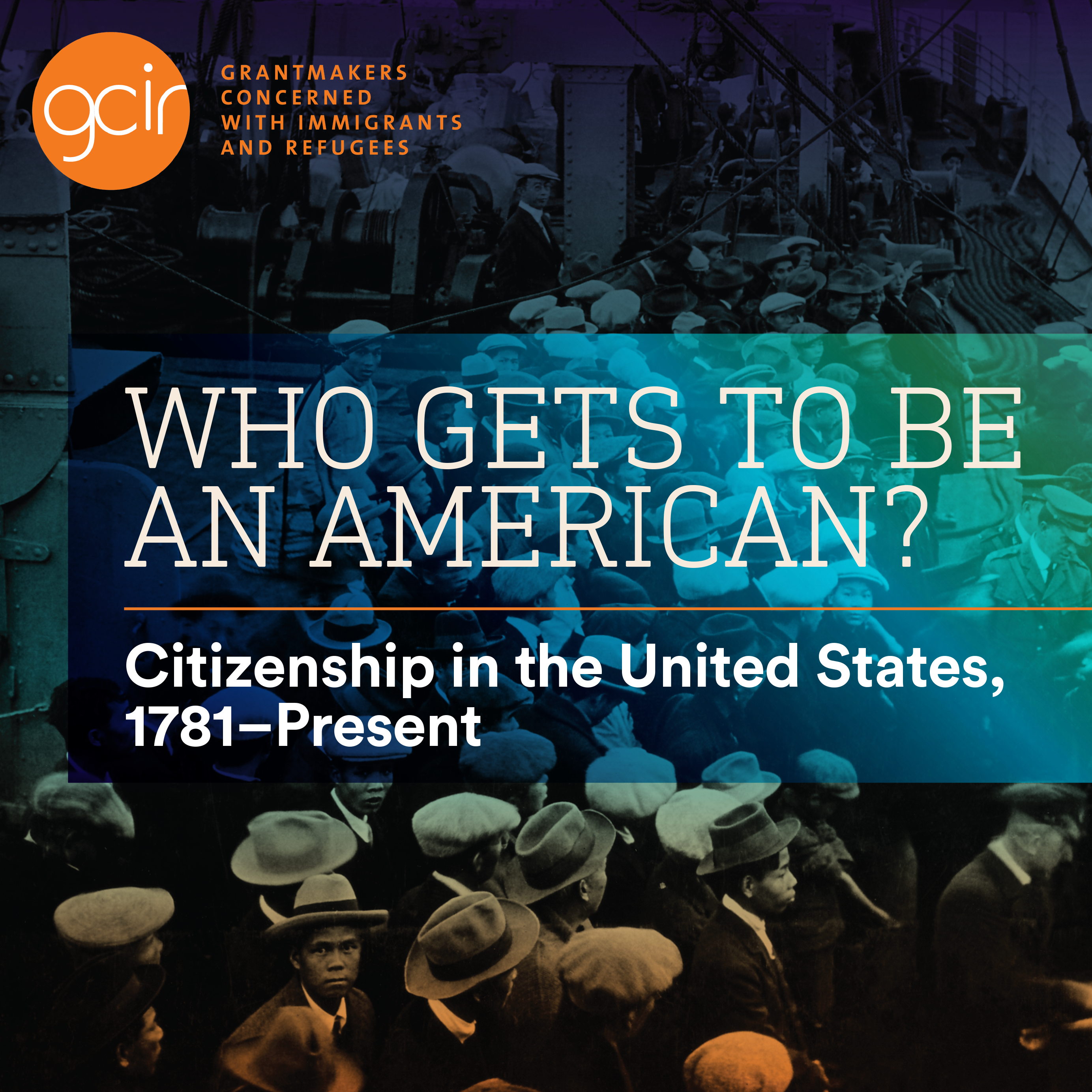
What does it mean to be an American? How has the United States defined citizenship over time? To explore these critical questions, GCIR has developed a timeline, “Who Gets to Be an American,” which provides in-depth information on the evolution of American citizenship and how the United States has determined who belongs in this country and who does not. Understanding this history and the forces that drive it is critical to understanding how we decide who gets to be American today.
This is the first in a series of timelines GCIR will release over the coming year, culminating in the release of a full Im/Migration Timeline tracking the history of movement within, to, and from the United States through a liberated lens, connecting to and uplifting perspectives, events, and stories that have been systematically excluded from mainstream presentations of history. This project aims to:
- challenge prevailing notions of how, when, and why different groups have had to move;
- shed a light on restrictive policies the federal, state, and local governments have enacted to limit (or force) that movement; and
- detail how people have moved to seek safety and security in (and sometimes away from) the United States over time.
Migration is movement. People move to new homes to improve their lives and those of their family members, to be closer to work and other opportunities, or to be safer. Exploring the history of citizenship in the U.S. also shows us how closely immigrant justice has always been tied to racial justice. Citizenship, who gets to be an American, who belongs in this nation – they are all connected to race-based policies that have their roots in exclusion. However, delving into this history also reveals how we as a nation have become more inclusive and have moved closer to fulfilling our country’s promise of self-determination and equality.
Citizenship is a legal status which provides for certain rights and privileges, including the right to be lawfully present in the country and not subject to deportation or removal. Early in its history, as the United States grew and expanded its territory, the federal government defined citizenship narrowly. Black, Indigenous, and Asian individuals struggled to be included in that definition, which limited citizenship in 1790 to “free white persons.”
Read more: GCIR's Common Dreams op-ed: "Who Gets to be An American? On the Evolution of U.S. Citizenship"
Black, Indigenous, and people of color – including immigrants – resisted and challenged these restrictive policies in a variety of ways. Despite the enslavement of individuals of African descent, attempted extermination of the people indigenous to this land, exclusion of immigrants from Asia, and expulsion of people of Mexican descent, BIPOC communities fought for the promise of a multiracial democracy and to show that they belong in the United States.
Access to U.S. citizenship has expanded over time, from the establishment of a pathway to citizenship for merely 80% of the population in 1790, to the provision of birthright citizenship starting in 1868, with subsequent removal of racially discriminatory barriers to naturalization. While there continue to be ways federal policies can be improved, history has demonstrated that – rather than a nation based on a single race or ethnicity – this can and should be a multiracial democracy that embraces belonging and inclusion.
Read more: GCIR's “A Timeline of Texas Migration and BIPOC Resistance,” which was shared at our 2022 Biennial National Convening in Houston, TX.
For the next phase of GCIR’s timeline project, we will explore the ways in which U.S. military invasion and intervention throughout the Western Hemisphere have contributed to the need for people to move to seek safety, security, and stability. This assessment is connected to a larger historical analysis of how U.S. colonization, the doctrine of manifest destiny, and expansionism led to the modern demography of the United States.
citizenship timeline podcast: marissa tirona interviews ivy o. suriyopas
| Attachment | Size |
|---|---|
| 11.81 MB |
